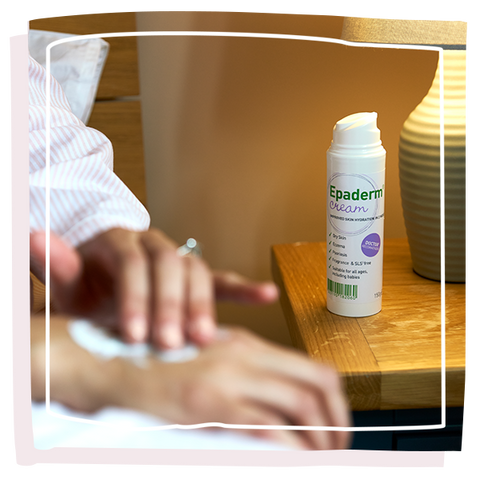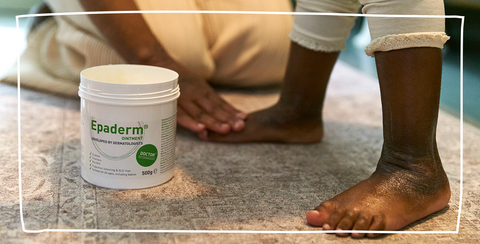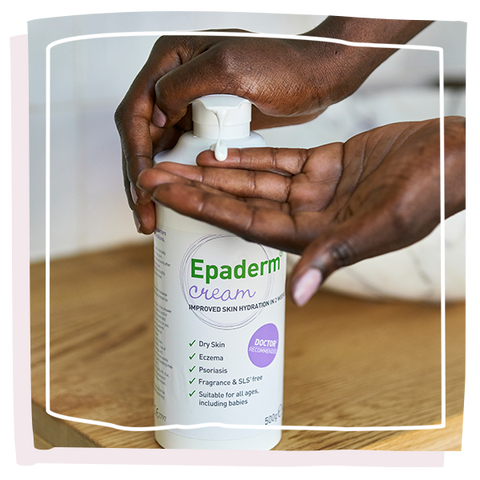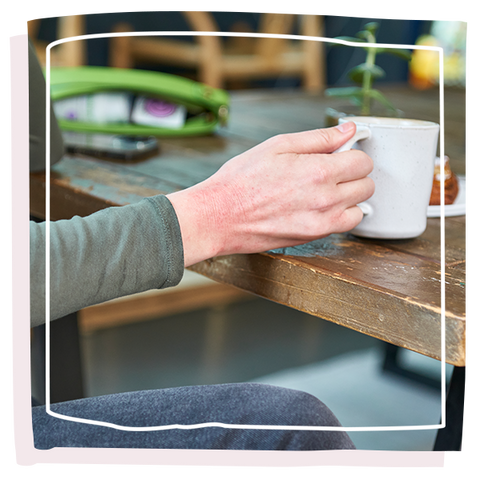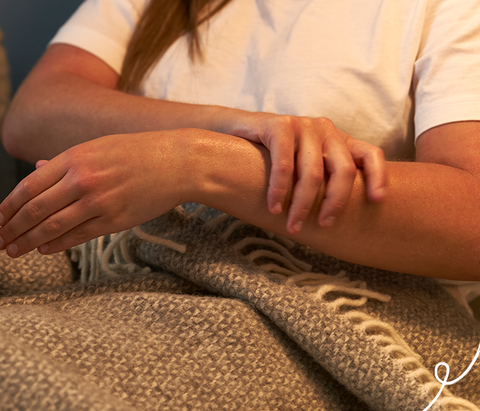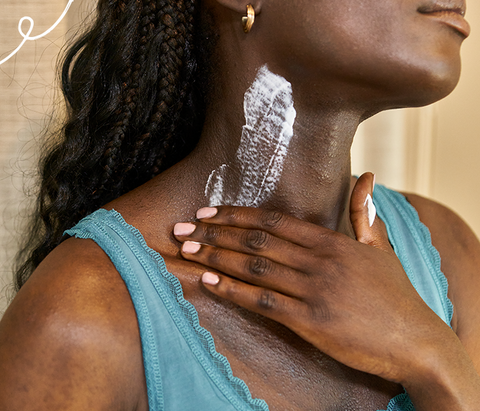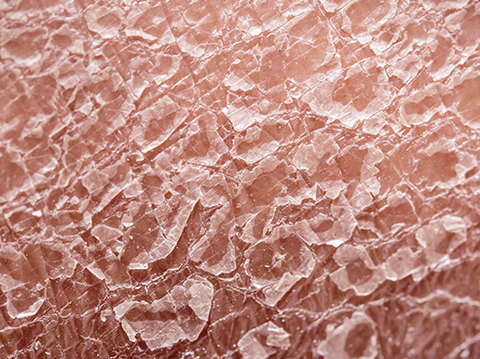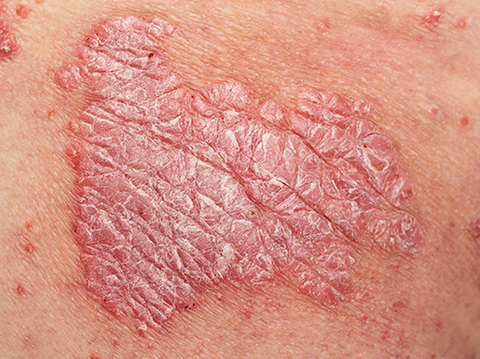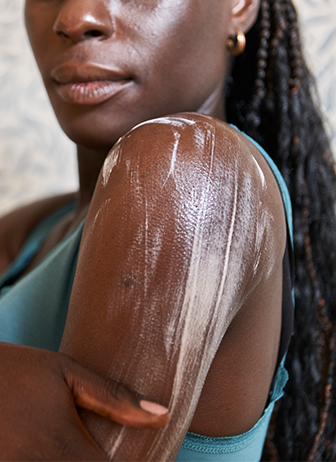Emollients Explained
How does emollient work? What does emollient cream do? And most importantly… why don’t we just call it moisturiser?
We know there are lots of questions surrounding this type of treatment. And while the word ‘emollient’ might sometimes seem a bit scary or medical sounding, it’s actually a really simple way to keep dry skin soft and hydrated.
Read on for your guide to all things emollients – the types, the benefits and how to apply them to get the best results.
What exactly is an emollient?
Let’s start with the definition of emollient. The Oxford English Dictionary defines it as ‘a softening application.’ But as it’s a term most used in the skincare world, a more appropriate definition would be a moisturising treatment that’s
applied directly to the skin.
This creates a protective film, which traps the moisture in to keep skin hydrated.¹ It does this by filling open spaces in your skin (caused when a lack of water makes it crack and flake) with fatty substances called lipids – resulting in a smoother, softer feel². Emollients come in a variety of different formats including emollient cream, lotions, sprays and ointment.
It’s important to notice that the description is ‘moisturising treatment’, not just a ‘moisturiser’. Even though these words are often used interchangeably, there is a difference. An emollient is the element that specifically softens the skin, whereas the moisturiser more generally adds water to it. A helpful way to think of it is an emollient can be one of the ingredients within a moisturiser – but not the other way around³.
What are emollients used for?
Emollients offer super-concentrated softening power, so they’re far more effective in treating dry skin than a general moisturiser.
While they can be used for soothing everyday skin irritation caused by things like heat or weather conditions, most often, they’re trusted to care for dry skin conditions such as eczema and psoriasis⁴. Flare-ups in both these conditions happen as a result of dry skin, which develops into those sore, irritated patches no-one wants to deal with. Regularly applying an eczema or psoriasis emollient helps skin stay hydrated, so you’re less at risk of the itch⁵.
One or more of these types of emollient can be used as a
substitute for soap, bubble bath or shower gel, which are all prime suspects for angering eczema.
So what is emollient cream used for vs. ointment or sprays? So how do you choose the right emollient for you?
Sometimes, it’s dependent on your symptoms – sprays are used for infected skin that shouldn’t be touched, and lotions are the best option for weeping or damaged skin⁷.
On the whole though, a good rule to keep in mind is...
The drier the skin, the thicker the emollient should be⁸.
This means that ointment is a good choice as an emollient for psoriasis, ichthyosis and eczema, as it creates the thickest barrier to really lock in that moisture. If skin is less dry or sore, a cream will do the job nicely.
As well as dryness, it’s also important to think about how these emollients fit into your daily life. While ointments are effective, their thicker texture mean they’re not always the most practical choice for work or a big night out. So you could choose a cream for the daytime, then keep the ointment for bed time or the most painful flare-ups.
Whichever option is best, you can rely on an Epaderm emollient to keep your skin soft. The Epaderm emollient cream is the light, absorbent treatment you need day after day. It contains just 6 kind-to-skin ingredients, and can be used as an emollient face cream.
Then when your skin needs extra help with hydration, our Epaderm Ointment is the one – and its clever 3-in-1 formula means it can be used as a soap substitute too.
How do I apply an emollient?
It can be difficult to know how much emollient to use, or how to apply it to get the best results. So here are a few handy tips:
- Start by dabbing a little of the cream or ointment on your skin, then gently rubbing it in – you don’t need to rub it in completely.
- Rub downwards in the direction of your hair growth – this helps make sure your follicles don’t get blocked. (We know this is not always practical or a reality, the priority is getting the emollient on! When you can... your follicles will thank you for it!)
- Try and apply within 3 minutes of washing your hands or getting out of the shower or bath, before the moisture can escape from your skin. (If you’re thinking ‘I can’t even get out of my towel within 3 minutes!?’, we get you! Just try and apply as soon as possible when you’ve finished washing.)
- Keep a bigger pot at home, then have a few smaller pots to take with you when you’re out and about. That means you’ll never be too far away from your emollient.
Even better than all of these, the best tip we can give you for how to apply emollient cream is… the more the better! Epaderm emollient cream is fragrance and steroid-free, so can pile on as much as you like, as often as you feel you need it to keep that skin hydrated (it could be as regularly as every couple of hours.)
It’s especially recommended to reapply every time the affected area gets wet, so have a pot to hand for an after-swim or shower application, or when you’ve washed your hands⁹ ¹⁰ .
So that’s emollients, explained! Incorporating an emollient cream or ointment into your daily moisturising routine is a great way to keep those cracks, flakes and itches at bay. But if you are struggling with any of the effects of dry skin, eczema or psoriasis, remember you can always visit your doctor for more specific treatment or advice.

